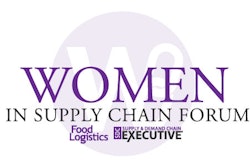
The conversation around equity in the workforce has undoubtedly become louder; however, sufficient action to drive needed progress remains lagging. Data shows that gender-based adversity still affects around 74% of women in supply chain and that only 40% of supply chain organizations are working on specific supply chain Diversity, Equity, and Inclusion (DEI) initiatives.
As the industry at large continues to evolve and innovate at unprecedented speeds, equity for women in supply chain has not kept the same pace. With so much work still to be done, words must be turned into action in order for significant progress to be made.
Here are three keys to driving the industry forward.
Bridging the divide
Historically, women have always had to work extra hard to dispel stereotypes and prove their worth in the workforce. And while the gradual upward growth of women in supply chain – a male-dominated industry – signals movement in the right direction, there are still unique hurdles that women today face.
For example, attribution bias, a type of bias that plagues workplaces across industries, means women are given less credit for accomplishments and are viewed as less competent than men. Women face other types of biases that impact their work experience as well, from maternal and performance bias to likability bias. Data shows that women caregivers are 5 to 8 times more likely than men to have their employment negatively affected.
Many other issues have compounded and contributed to the significant disparity in gender equity we’re seeing today, including the fast pace of technological advancements. The pandemic spurred rapid innovation, making digital literacy and skills a requirement for today’s workers across fields.
Consequently, the digital divide has only widened, resulting in increased barriers for women to enter and succeed in many roles. In fact, globally, women are 21% less likely to be online compared to men. And according to recent survey data, even though many women are eager to learn and develop their skills, just 52% of their employers offer them the funds to do so.
Developing supply chain talent will be critical for supporting all of the industry advances and solutions we’re seeing today, from artificial intelligence and robotics to other forms of automation. This means that while people at all levels of the supply chain need to adopt new skills to excel in this evolved framework, even more needs to be done to level the playing field for women.
It is incumbent on organizations to take intentional actions for eliminating gender bias and workplace discrimination from within while empowering all workers with the tools and learning opportunities they need to upskill and succeed.
For those struggling with where to begin, establishing metrics around DEI is a good place to start. Metrics create accountability in an organization to consistently drive actions and then confirm that the actions being taken are actually working.
Good intentions don’t drive results. However, intentional actions don’t always drive the desired outcomes, either. Baselining where you started and measuring where you are, versus where you want to go, are key to making progress.
Solving supply chain challenges with a commitment to talent
Committing to DEI is essential for companies not only looking to hire the best talent but for driving progress in the industry. This effort needs to remain top of mind as open roles and labor shortages play a significant role in the continued disruption of supply chains — and until there is enough support, we’ll continue to experience supply chain roadblocks and logistical issues.
At the start of the pandemic, the manufacturing industry in particular took a major hit, losing around 1.4 million jobs. Fast forwarding to January 2023, there were still a substantial 803,000 manufacturing jobs left open.
To further underscore the impact of recruiting women, according to recent data, women make up more than 29% of the manufacturing workforce, but if that percentage were raised to just 35%, it would be enough to fill nearly every open job in the manufacturing industry today.
Labor shortages create the perfect storm for supply chain chaos — and urgently signal a need for attracting more women into the workforce through improvements in wages, benefits, and conditions that retain female talent.
When it does come to benefits and work-life balance, it’d be remiss not to mention the worsening gender pay gap and childcare crisis. Data shows that the wage gap disproportionally hurts mothers, especially women of color, who lose out on upwards of $30,000 each year.
The overall impact of insufficient childcare is substantial; it costs $122 billion in lost earnings, productivity, and revenue every year and negatively impacts efforts at work for 85 percent of primary caregivers.
In particular, as the world embraces flexible/hybrid work, women in more hands-on roles, such as manufacturing and warehousing, are left struggling to navigate work and home life more than ever. Organizations and policymakers must find ways to offer better options and benefits to support women’s personal lives and employment.
Building up the leaders of today and tomorrow
From ‘The Great Resignation’ to ‘The Great Reshuffle’ the events of recent years have had employees of all industries quitting their jobs in droves. But it was women leaders who ignited ‘The Great Breakup’ when they grew tired of feeling undervalued and having to constantly prove their worth.
Having women in supply chain leadership positions is essential for boosting collaboration, problem-solving and improving results — but it's an area that needs work. In 2022, women in supply chain organizations only accounted for 19% of C-level positions.
As women call it quits and switch jobs at rapid rates, organizations run the very real risk of losing not only exceptional current leaders but bright prospective talent. Ensuring diversity of thought, perspectives and experiences is essential – and having more women in leadership roles empowers future generations of women with the confidence they need to set out and reach their goals.
To keep up with the evolving supply chain landscape, supply chain organizations must do more to carve space for female voices and perspectives. From offering valuable differentiators to attract talent, such as better pay, benefits and growth opportunities, to partnering with universities to prepare future talent, it’s time to take action to ensure sustainable progress now and ongoing into the future.


![Pros To Know 2026 [color]](https://img.sdcexec.com/mindful/acbm/workspaces/default/uploads/2025/08/prostoknow-2026-color.mduFvhpgMk.png?auto=format%2Ccompress&bg=fff&fill-color=fff&fit=fill&h=100&q=70&w=100)







![Pros To Know 2026 [color]](https://img.sdcexec.com/mindful/acbm/workspaces/default/uploads/2025/08/prostoknow-2026-color.mduFvhpgMk.png?ar=16%3A9&auto=format%2Ccompress&bg=fff&fill-color=fff&fit=fill&h=135&q=70&w=240)








